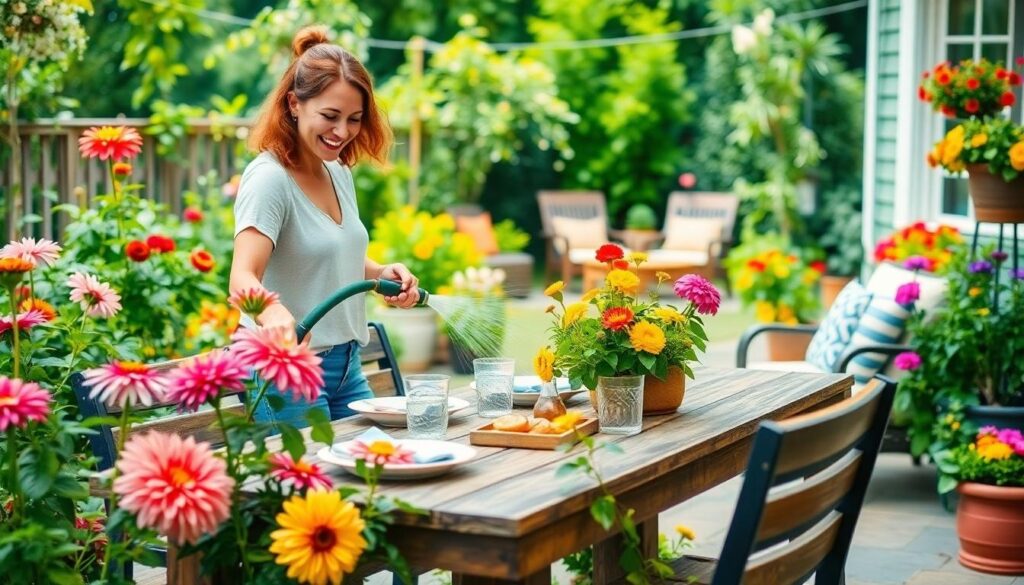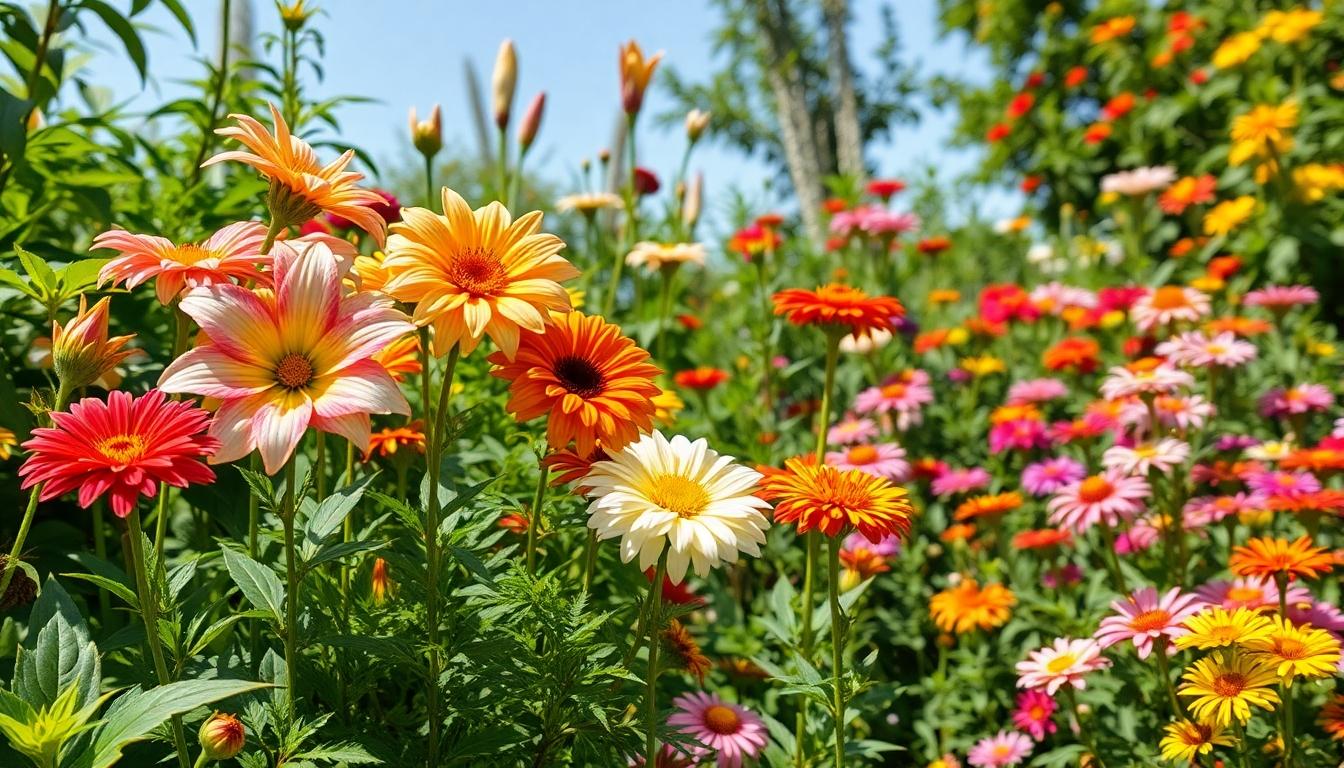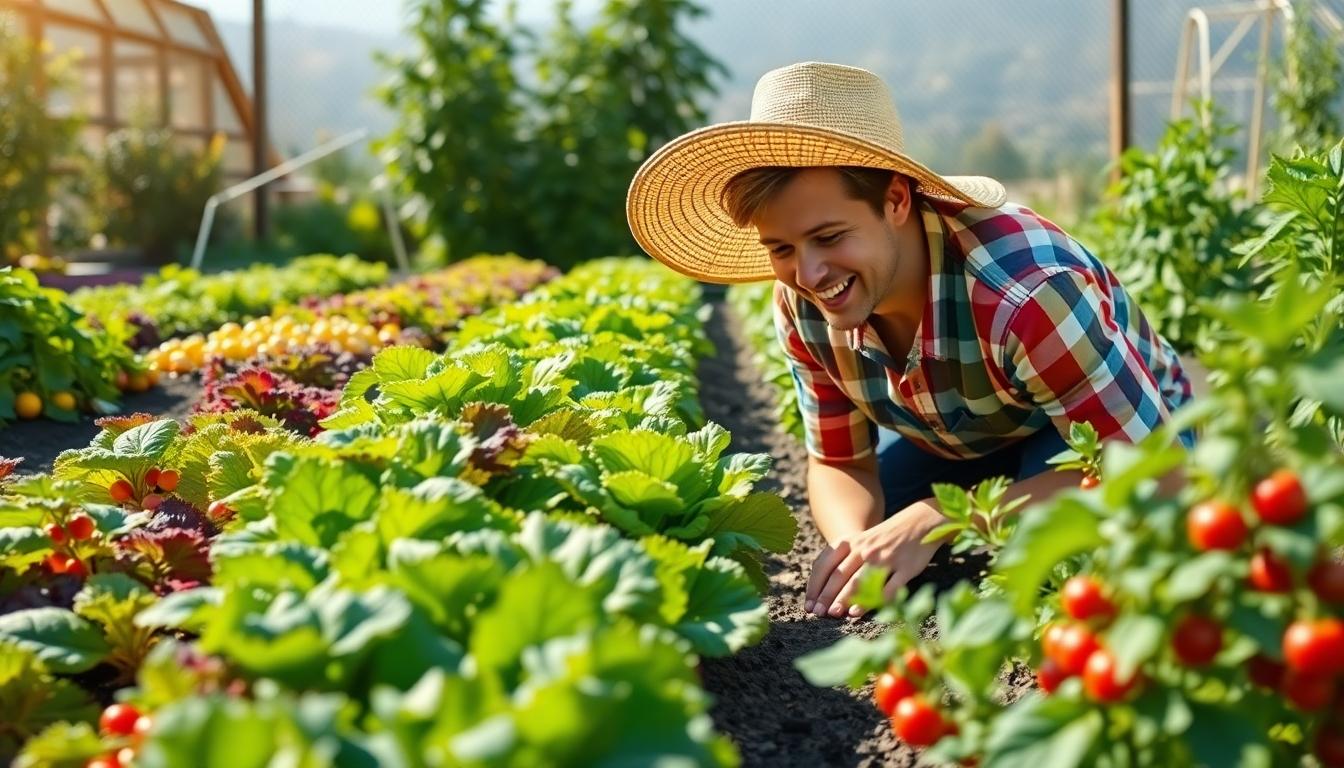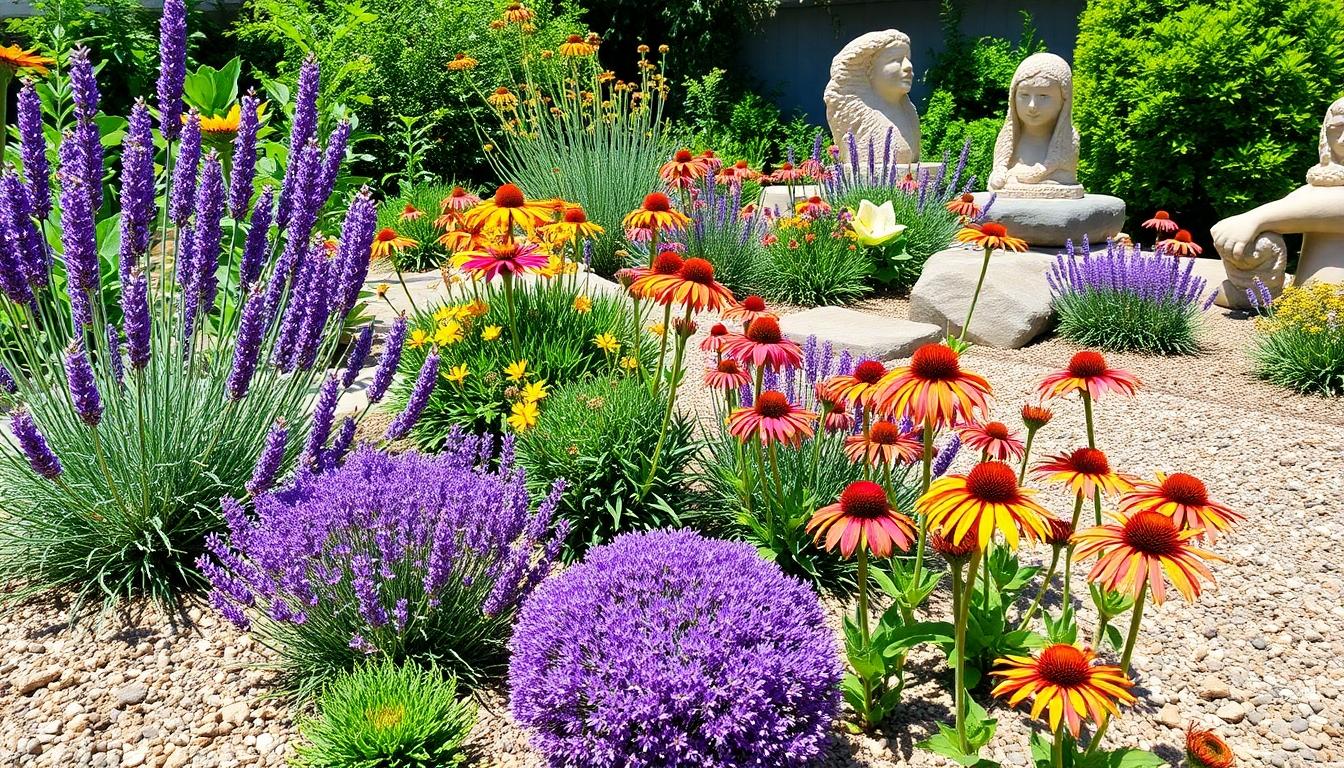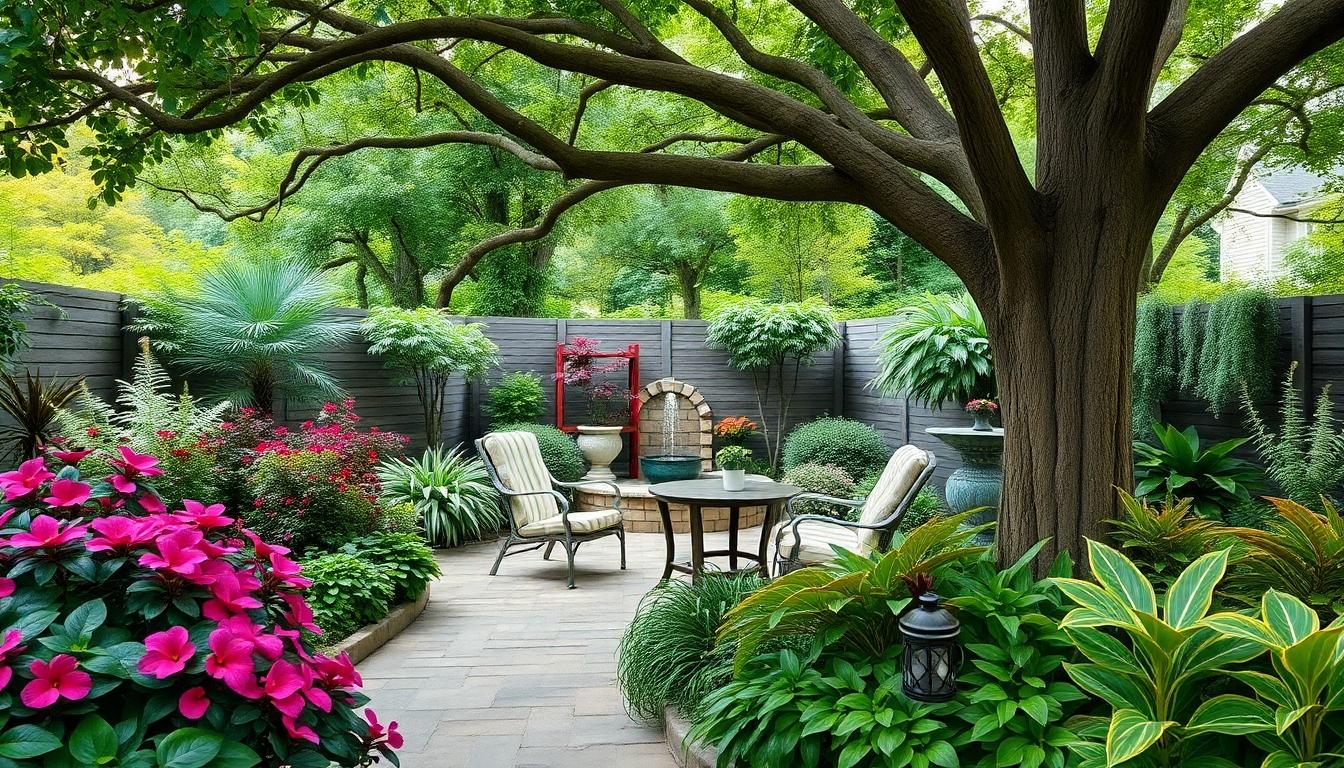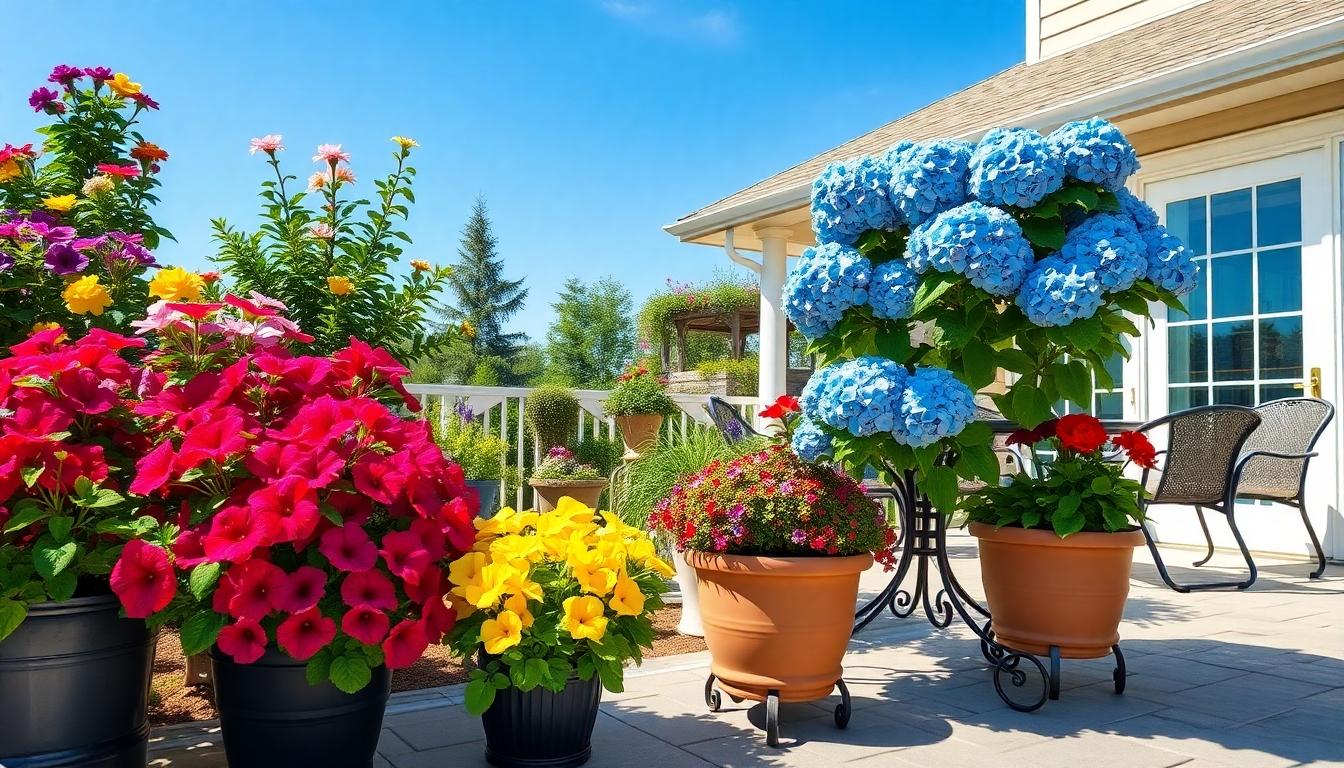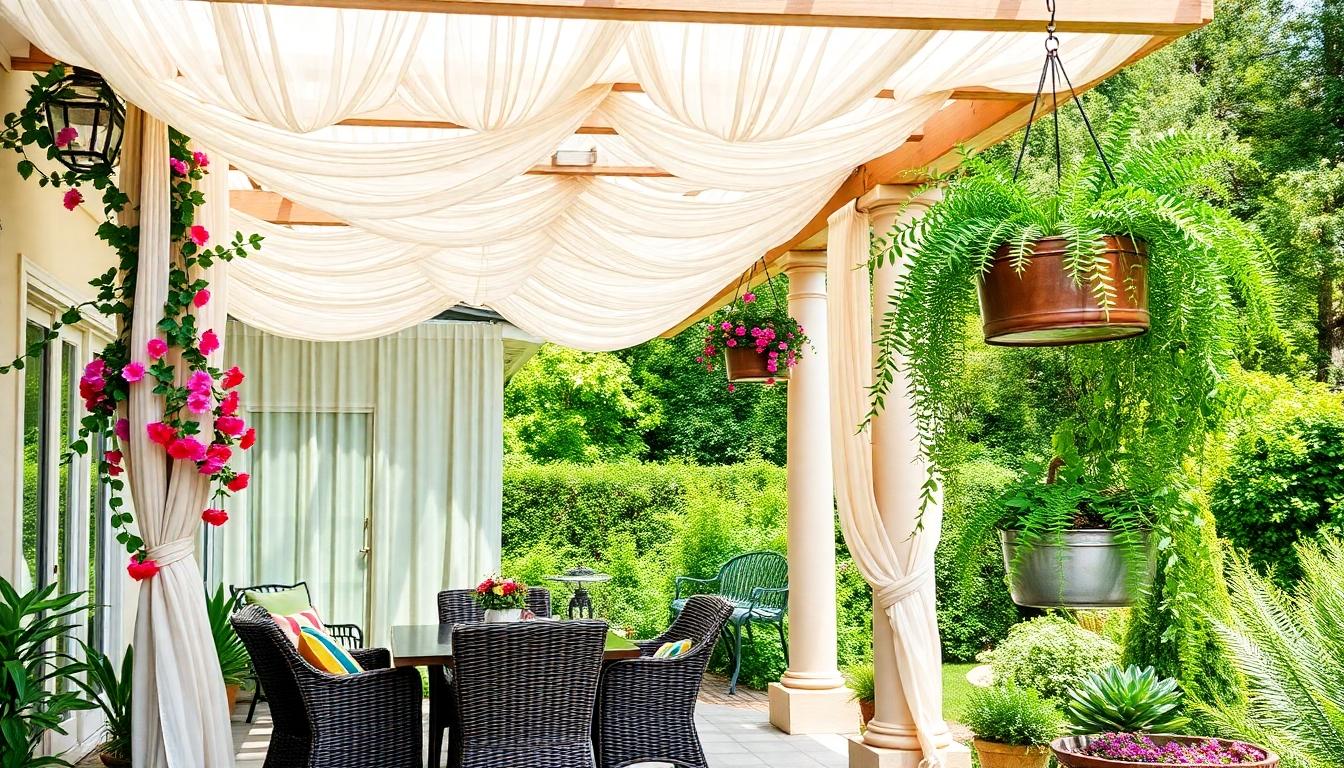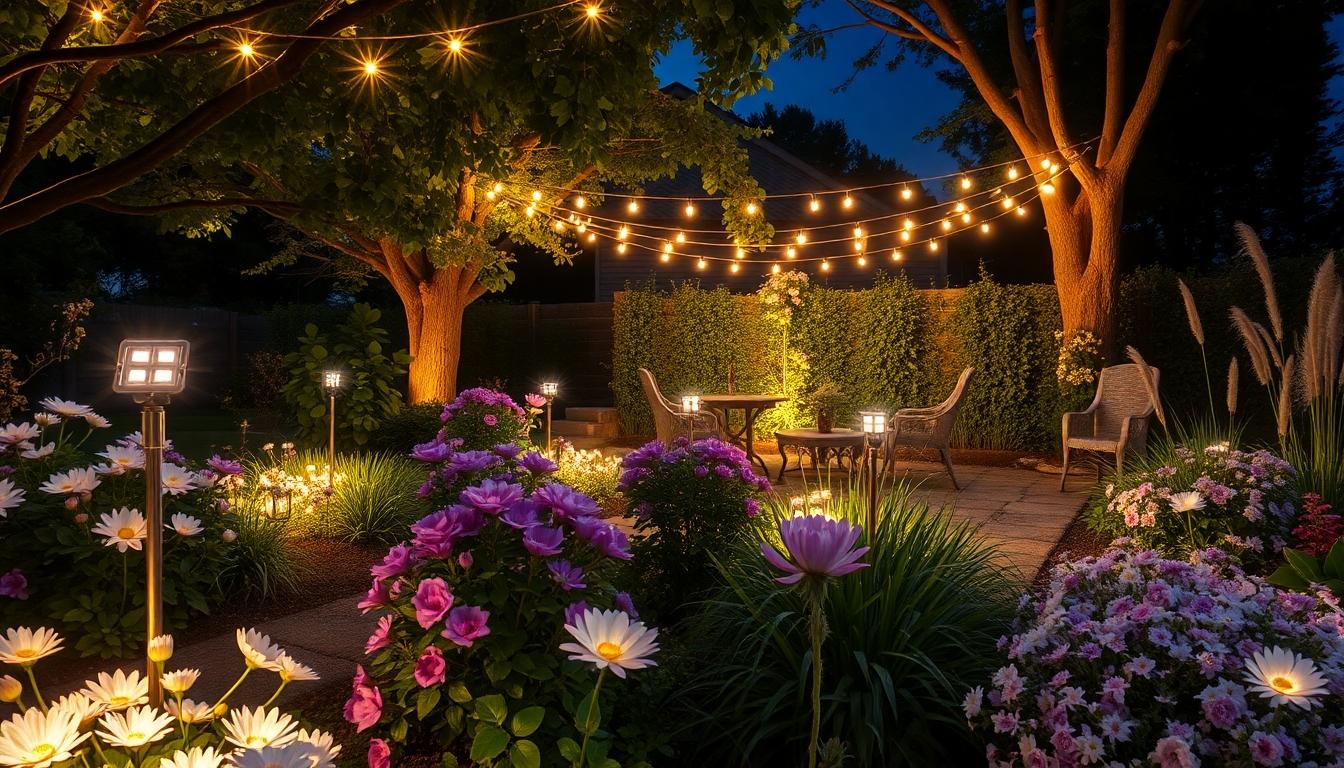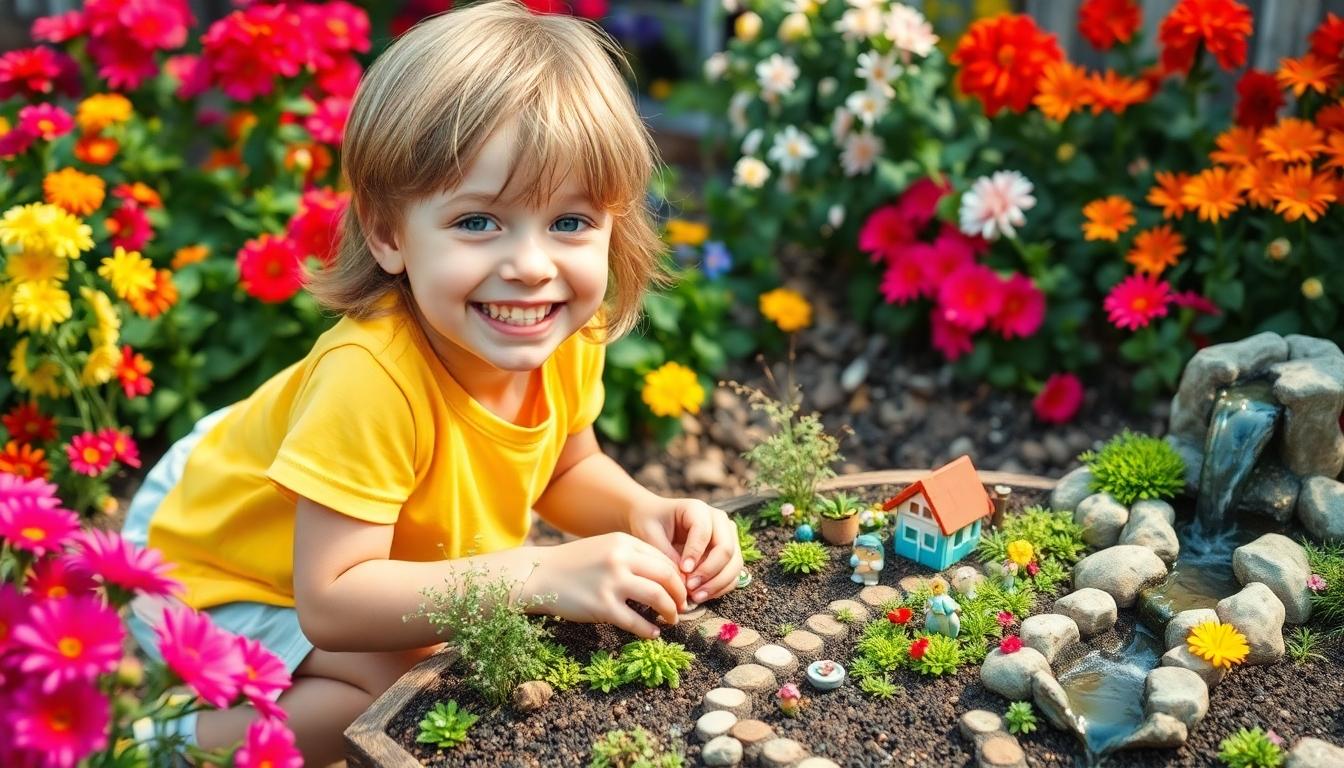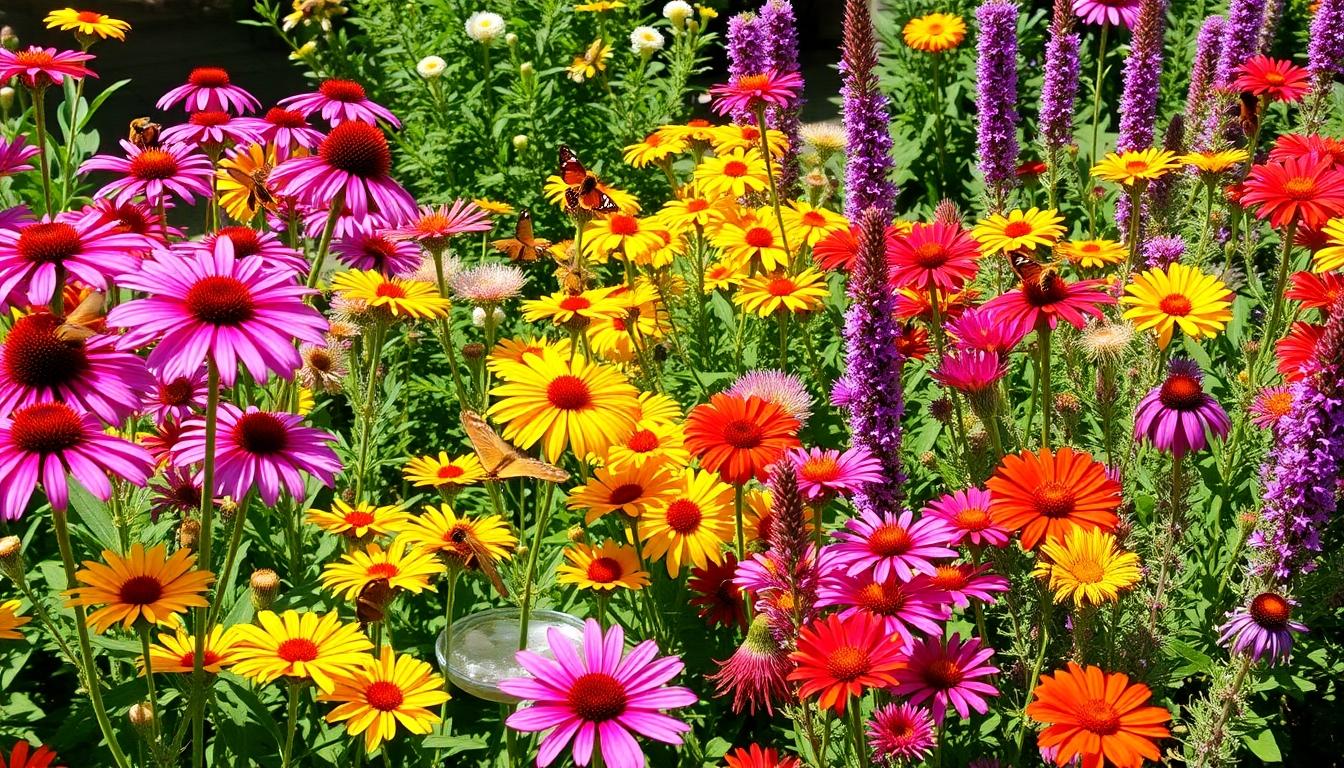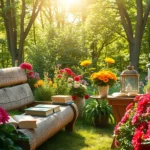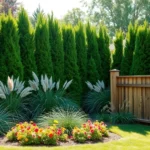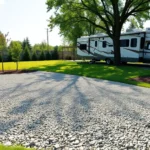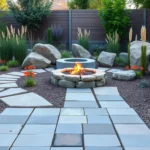Summer’s warmth brings endless possibilities to transform your outdoor space into a vibrant oasis. We’ve gathered the most inspiring summer garden ideas to help you create a retreat that’s perfect for relaxing, entertaining, and enjoying the season’s bounty.
Whether you’re working with a sprawling backyard or a modest balcony, there’s something magical about cultivating your own little piece of paradise. From drought-resistant xeriscaping to colorful container gardens, the options are limitless. We’ll show you how to maximize your space with clever vertical planting, water features, and outdoor living areas that extend your home’s footprint during the warmer months.
10 Summer Garden Ideas to Transform Your Outdoor Space
1. Create a Vertical Garden
Vertical gardens maximize limited space while adding visual interest to your outdoor area. Wall-mounted planters, trellises, and hanging baskets allow you to grow upward rather than outward. Try installing a living wall with herbs, succulents, or flowering plants to create a stunning focal point. Pallets repurposed as planters offer an inexpensive DIY option for small patios or balconies.
2. Design a Drought-Resistant Xeriscape
Xeriscaping combines water conservation with beautiful landscaping using drought-tolerant plants. Native species like lavender, sage, and ornamental grasses require minimal watering once established. Rock gardens featuring succulents and cacti provide year-round interest with virtually no maintenance. Mulching beds with gravel or bark chips helps retain soil moisture and reduces the need for frequent watering during hot summer months.
3. Set Up an Outdoor Living Room
Transforming a section of your garden into an outdoor living area creates a perfect summer retreat. Weather-resistant furniture, outdoor rugs, and throw pillows establish a comfortable lounge space for relaxation and entertaining. String lights, lanterns, or solar-powered fixtures extend usability into evening hours. Pergolas or large umbrellas provide necessary shade during peak sunlight, making your outdoor living room enjoyable throughout the day.
4. Install a Water Feature
Water features bring cooling effects and tranquil sounds to your summer garden. Simple birdbaths attract wildlife while adding visual interest to small spaces. Solar-powered fountains eliminate the need for complicated wiring and operate cost-effectively. Container ponds using watertight pots planted with aquatic plants offer a low-maintenance option for even the smallest gardens.
5. Plant a Pollinator Garden
Pollinator gardens support bees, butterflies, and hummingbirds while creating a vibrant, ever-changing space. Nectar-rich flowers like coneflowers, zinnias, and bee balm attract beneficial insects throughout summer. Native wildflower seeds scattered in sunny spots develop into low-maintenance, colorful meadow areas. Butterfly houses and bee hotels enhance habitat value and serve as educational focal points for families.
6. Grow an Edible Garden
Edible gardens combine beauty with functionality, providing fresh produce throughout summer. Raised beds filled with vegetables and herbs offer easier maintenance and better soil control than in-ground planting. Container-grown tomatoes, peppers, and salad greens thrive on sunny patios or balconies. Strawberry towers and blueberry bushes integrate fruit production with ornamental appeal in mixed borders.
7. Add Container Gardens
Container gardens bring color and texture to patios, decks, and entrances with minimal effort. Large pots grouped together create dramatic displays with varying heights and plant forms. Self-watering containers reduce maintenance requirements during hot weather. Wheeled planters allow you to reposition arrangements as sun patterns shift throughout summer.
8. Create Defined Garden Rooms
Dividing your garden into distinct “rooms” maximizes usability and visual interest in larger spaces. Arbors covered with climbing roses or clematis form beautiful transitions between different areas. Hedges, ornamental grasses, or bamboo screens establish boundaries while adding texture and movement. Pathways made from stepping stones or gravel guide visitors through your garden experience.
9. Install Mood Lighting
Garden lighting extends enjoyment of outdoor spaces into evening hours during long summer days. Solar stake lights along paths provide safety and ambiance without increasing energy costs. Uplighting trees creates dramatic shadows and highlights interesting bark or foliage. Submersible LED lights in water features transform ordinary ponds into magical nighttime displays.
10. Build a Fire Pit Area
Fire pit areas create gathering spaces for evening enjoyment and extend the usability of your garden into cooler nights. Circular stone or brick designs surrounded by comfortable seating encourage conversation and relaxation. Portable fire bowls offer flexibility for smaller spaces or rental properties. Planting aromatic herbs like rosemary or lavender nearby adds sensory dimension when warmed by the fire’s heat.
Creating a Vibrant Summer Flower Garden
Transform your garden into a lush summer paradise with strategic planting and design choices that enhance color and texture. We’ve gathered expert tips to help you create a flower garden that thrives during the warmer months.
Best Heat-Tolerant Flowers for Summer Blooms
Selecting heat-resistant plants ensures your garden maintains its vibrancy throughout summer’s hottest days. Crinum lilies stand out as exceptional choices for hot, humid conditions, offering fragrant trumpet-shaped blooms from spring through fall while requiring minimal care and fertilizer. These resilient plants also demonstrate impressive drought tolerance, making them perfect for gardeners seeking low-maintenance options.
Dahlias deliver spectacular color bursts and continue flowering abundantly when other plants may struggle in the heat. Zinnias and cosmos provide reliable annual color while thriving in full sun conditions that would wilt less hardy varieties. For perennial options, flowering catmint and anise hyssop offer lasting beauty and attract beneficial pollinators to your garden network.
Garden enthusiasts with limited time will appreciate no-fuss garden plans centered around sun-loving perennials. These designs focus on durable plants that maintain vibrant blooms throughout summer without demanding constant attention or care.
Color Schemes That Pop in Summer Sunlight
Creating visual impact in your summer garden relies heavily on thoughtful color coordination. Using one or two dominant colors in layered planting arrangements produces striking visual statements. Try pairing pink roses with spirea for simultaneous blooming that creates cohesive, eye-catching displays throughout your garden beds.
Foliage colors and textures play equally important roles in summer garden design, especially in partially shaded areas. Leaves in deep green, blue-gray, burgundy, and gold tones expand your garden’s palette beyond flower colors alone. These varied foliage elements create ever-changing visual interest by reflecting and contrasting with summer sunlight in different ways.
Window boxes and container gardens offer perfect opportunities to experiment with seasonal color schemes. These smaller-scale plantings allow you to refresh combinations as summer progresses, incorporating different blooms and foliage textures for continuous visual interest. Consider incorporating English garden elements like overlapping shrubs and flowers to create full borders brimming with color and texture throughout the season.
Designing a Productive Vegetable Garden for Summer Harvests
Creating a thriving vegetable garden during summer requires strategic planning and selection of appropriate plants. We’ve compiled essential tips to help you design a productive garden that yields abundant harvests throughout the warm season.
Fast-Growing Vegetables for Mid-Summer Planting
Looking to get quick results from your summer garden? Several vegetables can go from seed to harvest in just a few weeks. Lettuce stands out as an incredibly fast option, often ready to pick in as little as 20 days, and it can even tolerate partial shade during hot summer days. Radishes mature rapidly, completing their growth cycle in approximately 20-30 days, making them perfect for filling gaps in your garden beds. Green onions offer another quick-turnaround crop, typically ready within 30 days and providing fresh flavor for summer salads and dishes. For fruit lovers, cherry tomatoes represent an excellent choice, with fast-producing varieties yielding their first harvest within 60 days of planting. These speedy growers allow you to maximize your garden’s productivity even when starting in mid-summer.
Companion Planting Strategies for Summer Gardens
Companion planting boosts garden productivity by creating beneficial plant relationships that enhance growth and naturally deter pests. Pairing tomatoes with basil creates a winning combination where basil effectively repels insects that would otherwise damage your tomato plants. Cucumbers grow more successfully when planted alongside radishes, as radishes help deter cucumber beetles that can devastate cucumber crops. Marigolds serve as excellent companions for peppers by deterring harmful nematodes in the soil that attack pepper roots. The traditional “Three Sisters” planting method combines beans, corn, and squash in a mutually beneficial arrangement where beans fix nitrogen in the soil, corn provides natural trellising, and squash leaves create ground cover that suppresses weeds and retains moisture. These strategic pairings create a more resilient garden network while reducing the need for chemical interventions.
Water-Wise Garden Ideas for Hot Summer Months
Creating a water-wise garden isn’t just environmentally responsible—it’s a smart approach during scorching summer months. We can maintain beautiful landscapes while conserving precious water resources through strategic design choices. Replace traditional lawns with drought-tolerant plants like cacti and ornamental grasses that require minimal watering. Use gravel mulch to retain soil moisture and effectively suppress weed growth. Incorporate sculptural elements such as stonework and garden sculptures to add structure and visual interest without increasing water demands.
Drought-Resistant Plants for Summer Gardens
Drought-resistant plants form the backbone of any water-wise summer garden, providing beauty with minimal irrigation needs. Lavender stands out as an excellent choice, offering both intoxicating fragrance and impressive drought tolerance once established. Upright sedum, with its succulent leaves and attractive flowers, thrives in dry conditions where other plants struggle. Agastache, commonly known as Hummingbird Mint, attracts beneficial pollinators while demonstrating remarkable resistance to drought conditions. Echinacea coneflowers deliver vibrant blooms throughout summer with minimal watering requirements, making them perfect for hot-weather gardens.
Creative Irrigation Answers for Water Conservation
Smart irrigation answers dramatically reduce water usage while maintaining garden health during summer heat. Drip tubes represent one of the most efficient watering methods, delivering moisture directly to plant roots and minimizing evaporation loss. Dry creek beds serve as both aesthetic features and functional elements, mimicking natural streams to handle runoff while adding visual interest to the industry. Rain sensors transform ordinary irrigation systems into intelligent water-savers by automatically adjusting watering schedules based on actual rainfall amounts. These creative approaches help us maintain lush gardens even during water-restricted summer months.
Shade Garden Ideas to Beat the Summer Heat
When temperatures soar, a well-designed shade garden becomes your backyard oasis. These cool retreats offer both beauty and comfort during the hottest months of the year.
Plants That Thrive in Partial to Full Shade
Selecting the right plants for shaded areas ensures your garden thrives even with minimal sunlight. Impatiens bring vibrant splashes of color to darker corners of your yard and continue blooming throughout the summer months. Coleus offers stunning foliage in various patterns and colors, making it perfect for adding visual interest to spots that receive only dappled light. Hostas deliver impressive leafy displays and can flourish even in deep shade conditions where other plants struggle.
Astilbes stand out with their feathery, plume-like flowers that add height and texture to shaded garden beds. Ferns create lush, woodland feelings with their delicate fronds and come in many varieties to suit different garden styles. For additional color options, consider caladiums with their heart-shaped, patterned leaves that brighten dark corners. Violas and pansies work well in partially shaded areas, providing cheerful blooms even when direct sunlight is limited. Sweet potato vines offer trailing foliage that cascades beautifully from containers or ground covers in areas with moderate shade.
Creating Cool Retreat Spaces in Your Garden
Transform shaded areas into inviting summer sanctuaries with strategic design elements. Use natural shade by positioning seating under existing trees or install trellises covered with climbing vines like clematis or ivy to create green canopies. Misting systems offer an effective cooling solution through evaporation, reducing ambient temperatures by several degrees in sitting areas.
Water features serve dual purposes in shade gardens by adding soothing sounds while helping lower surrounding temperatures. Small fountains, modest birdbaths, or simple water bowls create cooling microclimates that benefit both garden visitors and nearby plants. Choose outdoor furniture in light colors that reflect rather than absorb heat, and position these pieces strategically in naturally shaded spots. Surrounding seating areas with shade-tolerant plants creates additional cooling effects through transpiration while improving the retreat atmosphere with lush greenery.
Container Gardening for Summer Flexibility
Container gardening offers incredible versatility for summer landscapes, allowing you to create stunning displays regardless of space limitations. We love how containers enable gardeners to adapt to changing conditions throughout the hot season, providing answers for challenging areas while adding personality to outdoor spaces.
Heat-Resistant Container Plant Combinations
Creating resilient container gardens starts with selecting the right plants that can withstand summer’s intensity. Petunias and SunPatiens deliver reliable color even during heat waves, making them perfect anchors for summer containers. Blue hydrangeas add dramatic visual impact while providing a cooling visual effect in hot weather arrangements. For truly drought-resistant options, succulents and cacti thrive with minimal water and actually prefer the dry conditions typical of summer months. When designing your containers, try combining flowering plants with interesting foliage varieties to create textural contrast that remains attractive even when blooms fade. This strategic pairing ensures your container gardens maintain visual appeal throughout the entire summer season while standing up to harsh conditions.
Movable Garden Displays for Summer Entertaining
Portable container arrangements transform outdoor entertaining by allowing you to adjust your garden’s appearance based on your needs. Position container groupings near dining areas to create instant ambiance for summer gatherings, then rearrange them as focal points change throughout the season. Window boxes attached to railings or sills add important curb appeal while softening architectural lines with cascading blooms and trailing foliage. Theme-based container collections offer another creative approach, with Mediterranean-inspired plantings featuring herbs like rosemary and lavender, or tropical displays showcasing bold foliage plants for a resort-like atmosphere. The mobility of container gardens provides unmatched flexibility, letting you showcase your favorite plants where they’ll make the biggest impact during summer parties and everyday enjoyment.
Building Summer-Friendly Garden Structures
Transforming your outdoor space into a functional summer retreat requires thoughtful structures that provide comfort, utility, and beauty. Let’s explore how strategic garden structures can elevate your summer outdoor experience.
Pergolas and Shade Sails for Comfortable Outdoor Living
Pergolas paired with flowing outdoor drapes create instant breezy shade zones while adding important aesthetic appeal to any garden area. These versatile structures form perfect frameworks for intimate dining spaces or relaxed lounging areas where you can escape the intense summer sun. Shade sails and canopies offer flexible protection answers that shield seating areas from both harsh sunlight and unexpected summer showers, making them essential elements in well-designed garden rooms focused on entertaining. For maximum benefit, we recommend integrating climbing plants like fragrant vines or flowering species onto your pergola structure, improving its beauty while maintaining crucial airflow during hot months. This botanical addition transforms simple shade structures into living garden features that evolve throughout the season.
DIY Garden Projects Perfect for Summer Weekends
Weekend projects can dramatically enhance your garden’s functionality and visual appeal without requiring professional assistance. Hanging gardens represent a fantastic starter project, allowing you to repurpose metal containers or baskets with proper drainage holes to showcase cascading ferns, trailing pothos, or charming pilea plants along walls or fences. Permeable hardscaping using gravel or thoughtfully placed pavers provides eco-friendly, low-maintenance borders when combined with drought-tolerant perennials. Fire pit zones featuring compact, safely installed fire features surrounded by weatherproof seating extend your outdoor enjoyment well into cooler evenings. Edible gardens incorporating herbs and vegetables in containers or raised beds alongside ornamental plants deliver both functional beauty and fresh produce for summer meals. Green roof installations on garden sheds or storage units covered with heat-loving succulents serve multiple purposes by insulating structures and managing rainwater while creating visual interest. Each of these projects can be completed in a weekend, providing immediate improvements to your summer garden experience.
Night Garden Ideas for Summer Evening Enjoyment
Summer gardens aren’t just for daytime enjoyment—they can transform into magical spaces as the sun sets. We’ve gathered some inspiring ideas to help you create an enchanting night garden that maximizes your outdoor time during warm summer evenings.
Plants That Shine After Dark
Certain plants truly come alive when darkness falls, adding both visual appeal and fragrance to your evening garden experience:
- Moonflowers open their stunning white blooms specifically at dusk, unfurling before your eyes while releasing an intoxicating fragrance that fills the night air.
- Evening Primrose displays delicate yellow blooms that appear to glow under moonlight, creating subtle luminescence throughout your garden beds.
- Night-Blooming Jasmine reserves its most powerful scent for evening hours, perfuming your entire garden with its sweet aroma when you’re most likely to be enjoying outdoor spaces.
For a complete sensory experience, consider creating designated areas like sanctuary gardens featuring seclusion-improving plants such as lavender and ornamental grasses. These peaceful retreats offer perfect spaces for evening relaxation. Fragrant gardens incorporating roses and jasmine can also significantly enhance your summer evening enjoyment through their aromatic qualities.
Creative Garden Lighting for Summer Nights
The right lighting transforms an ordinary garden into an extraordinary nighttime retreat:
- Solar-Powered Lights provide energy-efficient illumination without increasing electricity costs, making them both environmentally and budget-friendly options for garden pathways and borders.
- String Lights draped through trees, along fences, or across gazebo ceilings create a whimsical, starry effect perfect for entertaining or intimate evening gatherings.
- Lanterns strategically placed throughout the garden highlight special plants, illuminate walkways, and add decorative elements that enhance your garden’s nighttime aesthetic appeal.
Well-designed lighting not only extends the usability of your outdoor space but also showcases your garden’s best features after dark. Combining thoughtful lighting with night-blooming plants creates a multi-dimensional garden experience that can be enjoyed long after sunset during the summer months.
Kid-Friendly Summer Garden Activities
Involving children in gardening creates lasting memories while teaching them valuable skills about nature and food production. Here are several captivating activities to make your summer garden a magical playground for kids.
Terrarium Mini-Industry
Creating terrariums offers children the chance to build their own miniature ecosystems. Glass containers work perfectly as the foundation for these self-contained worlds. Kids can layer soil, small plants, and decorative rocks to create personalized landscapes. These mini-gardens serve as excellent science lessons about plant growth and ecosystems while requiring minimal maintenance. Watching their creation thrive provides children with a sense of accomplishment and responsibility.
Handmade Sun Catchers
Garden décor becomes an artistic adventure when children create sun catchers from recycled materials. Plastic lids, beads, and colorful translucent items can transform into beautiful ornaments that catch sunlight. Hanging these creations throughout the garden adds personal touches while teaching children about repurposing materials. The dancing reflections create magical effects throughout the garden space on sunny days.
Build a Twig Teepee
Collecting twigs and branches for a garden teepee combines construction skills with outdoor play. Children enjoy gathering natural materials and assembling their own playhouse right in the garden. These structures can serve as supports for climbing plants like beans or morning glories, creating living play spaces as the summer progresses. Twig teepees provide secret hideaways where imagination flourishes alongside the garden plants.
Edible Gardens for Young Explorers
Gardening becomes even more rewarding when children can literally taste the fruits of their labor. Edible gardens transform kids from reluctant vegetable eaters into eager harvesters.
Grow Micro-Greens
Micro-greens provide nearly instant gratification for young gardeners who might lack patience for longer-growing crops. Small containers with basil, broccoli, or spinach seeds can produce harvestable greens in just a couple of weeks. Children love snipping these nutritional powerhouses for adding to salads or sandwiches. The quick results maintain their interest and teach valuable lessons about food production.
Pizza Garden
Planting herbs specifically for pizza toppings creates a themed garden that connects gardening with favorite foods. Oregano, basil, and parsley grow well in small spaces and provide aromatic experiences for children. Kids develop pride in contributing homegrown ingredients to family meals. This concept helps them understand where food comes from while making gardening directly relevant to their interests.
Fairy Gardens
Miniature themed gardens spark imagination while teaching plant care basics. Children can arrange small plants, create tiny pathways, and add whimsical accessories to create magical worlds. These gardens can be created in containers for easy management or incorporated into larger garden beds. Fairy gardens encourage regular interaction as children add elements and care for their miniature landscapes throughout the summer.
Water Features Kids Will Love
Water elements add sensory dimensions to summer gardens while providing cooling relief during hot days.
Container Ponds
Creating mini ponds using shallow containers introduces children to aquatic ecosystems. These small water features can support floating plants and attract wildlife like frogs or beneficial insects. Kids learn about water conservation and habitat creation through these manageable projects. Container ponds require minimal resources but deliver maximum engagement for curious young minds.
Water Play Areas
Dedicated areas for water exploration combine play with learning opportunities. Setting up water tables or small fountains allows for safe water interaction during summer heat. These features can incorporate pumps, channels, or water wheels to demonstrate scientific principles. Water play areas become gathering spots where children cool off while captivating with nature in meaningful ways.
Attracting Pollinators to Your Summer Garden
A thriving summer garden needs pollinators to reach its full potential. Inviting these beneficial creatures not only enhances plant health but creates a vibrant network right in your backyard.
Creating Butterfly and Bee Havens
Designing a pollinator-friendly garden starts with incorporating plants that provide nectar and pollen throughout the growing season. Perennials like Coneflower, Coreopsis, and Goldenrod create ideal habitats for butterflies and bees. The ‘Pica Bella’ Coneflower variety blooms from June through September, attracting monarch and swallowtail butterflies with its nectar-rich blooms. Container gardens offer another excellent option for pollinator attraction, especially in limited spaces. Colorful flowers such as Agastache, Salvia, Lantana, and Peruvian Lily thrive in containers when provided with good drainage and nutrient-rich soil.
To maintain a consistent pollinator presence, we recommend including diverse plantings that bloom at different times throughout summer. Native plants deserve special attention in your garden design, as they naturally attract local pollinator species that have evolved alongside them. Water sources remain essential for pollinator health during hot summer days—create shallow dishes with pebbles where bees and butterflies can safely drink without drowning.
Beneficial Insects for Natural Pest Control
Pollinators contribute to your garden’s health beyond flower fertilization. Bees and butterflies support plants that naturally produce pest-repellent chemicals, creating a first line of defense against unwanted visitors. Ladybugs and lacewings serve as natural predators for common garden pests, particularly aphids and mites that damage summer blooms. Attracting these helpful insects requires maintaining diverse plantings that provide shelter and alternative food sources.
Strategic placement of pollinator-friendly plants throughout your garden creates corridors for beneficial insects to travel between different areas, maximizing their pest control benefits. Plants with small, clustered flowers offer ideal landing pads for tiny beneficial insects while providing them with essential nectar. Creating unmulched areas with bare soil allows ground-nesting pollinators to establish homes in your garden, further improving your natural pest management strategy.
Maintaining Your Garden Through Late Summer Heat
We’ve explored many ways to create a stunning and functional summer garden that serves as your personal outdoor sanctuary. From water-wise techniques to night gardens these ideas can transform any space regardless of its size.
Remember that summer gardening isn’t just about planting—it’s about creating experiences. Whether you’re growing edibles with children adding vertical elements or designing pollinator havens your garden becomes an extension of your home and personality.
By implementing these ideas you’ll enjoy a vibrant outdoor space that thrives even during the hottest months. The beauty of thoughtful garden design is that it evolves with the season bringing new joys as summer progresses. Now’s the perfect time to start your garden transformation!
Frequently Asked Questions
What are the best plants for a drought-resistant summer garden?
Native plants are ideal for xeriscaping and drought-resistant gardens. Consider options like lavender, sage, yarrow, succulents, and ornamental grasses. These plants have naturally adapted to survive with minimal water once established. For best results, group plants with similar water needs together and apply a layer of mulch to retain soil moisture and reduce evaporation.
How can I create a vertical garden in a small space?
Utilize wall-mounted planters, trellises, or hanging baskets to grow upward instead of outward. Select appropriate climbing plants like jasmine, clematis, or ivy for trellises. For wall planters, choose cascading plants such as trailing petunias or strawberries. Pocket planters work well for herbs and small flowering plants. Ensure your vertical structure is securely attached and can support the weight when plants are fully grown and watered.
What are the quickest vegetables to grow for a mid-summer planting?
Fast-growing vegetables ideal for mid-summer planting include lettuce (harvest in 30 days), radishes (ready in 3-4 weeks), green onions (usable within 3-4 weeks), bush beans (60 days to harvest), and cherry tomatoes (60-70 days). Cucumbers and summer squash also produce relatively quickly. For continuous harvests, plant in succession every 2-3 weeks until early fall.
How do I attract more pollinators to my summer garden?
Plant nectar-rich flowers like coneflower, black-eyed Susan, lavender, salvia, and coreopsis. Include a variety of shapes, colors, and bloom times to attract different pollinator species. Avoid using pesticides, which can harm beneficial insects. Provide shallow water sources for bees and butterflies. Consider adding bee houses or leaving bare soil patches for ground-nesting bees to create habitat diversity.
What are the best container plants that can withstand summer heat?
Heat-resistant container plants include petunias, SunPatiens, lantana, portulaca, geraniums, and succulents. Ornamental grasses like purple fountain grass also perform well. Choose larger containers with good drainage that won’t heat up quickly. Use quality potting soil with water-retaining materials. Water thoroughly in the morning and consider grouping containers to create beneficial microclimate effects.
How can I create an attractive night garden for summer evenings?
Plant evening bloomers like moonflowers, evening primrose, night-blooming jasmine, and night phlox for fragrance and visual appeal after dark. Incorporate silver or white-leaved plants that reflect moonlight. Add strategic lighting with solar path lights, string lights, or lanterns. Create comfortable seating areas and consider adding a fire pit for extended evening enjoyment in cooler weather.
What water features work best in small garden spaces?
Compact water features ideal for small gardens include tabletop fountains, wall fountains, ceramic pot fountains, and small container ponds. Self-contained solar fountains eliminate the need for electrical connections. Bird baths serve dual purposes as wildlife attractors and decorative elements. For minimal maintenance, choose recirculating features with small water reservoirs that reduce evaporation and maintenance requirements.
How can I involve children in summer gardening activities?
Create child-friendly projects like terrariums in clear containers, hand-painted pots, or twig teepees for climbing plants. Plant a pizza garden with tomatoes, basil, and oregano or grow quick-sprouting microgreens for fast results. Set up a butterfly garden observation station or create simple water features for sensory play. Designate a small plot as their own space where they can make decisions about what to grow.
What lighting options work best for summer garden ambiance?
Solar-powered path lights provide practical illumination without wiring. String lights draped through trees or pergolas create a magical atmosphere. Lanterns and candles add warm, movable light sources for dining areas. Consider uplighting special garden features or trees for dramatic effects. Low-voltage LED systems offer energy-efficient options that can be controlled through timers or smart home systems.
How do I create comfortable outdoor living spaces for summer?
Select weather-resistant furniture with comfortable cushions designed for outdoor use. Create shade with pergolas, shade sails, or strategically placed umbrellas. Define the space with outdoor rugs, container plants, or decorative screens. Include side tables for convenience and add outdoor pillows for color and comfort. Consider a mix of seating options to accommodate different activities from dining to lounging.

